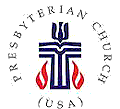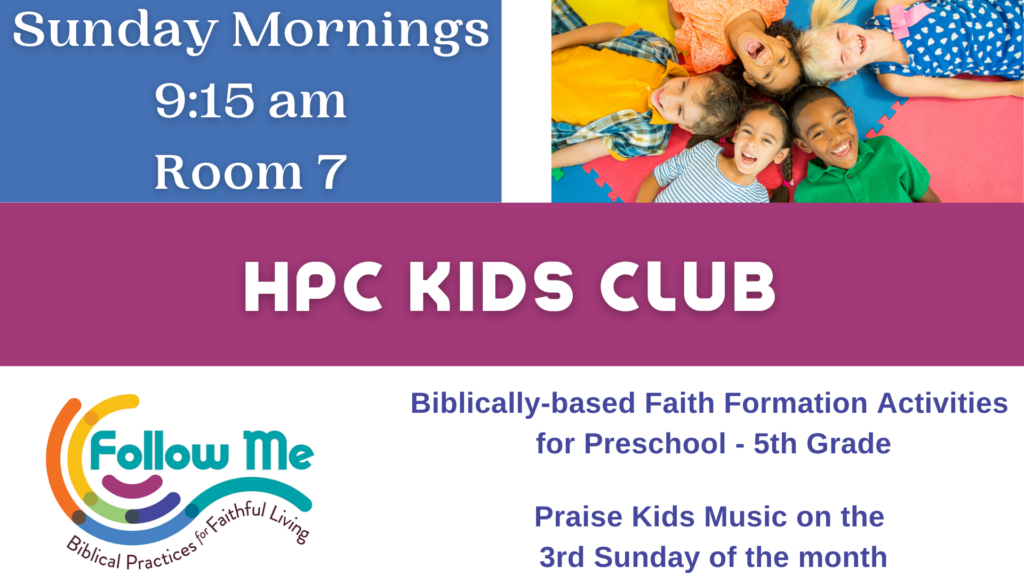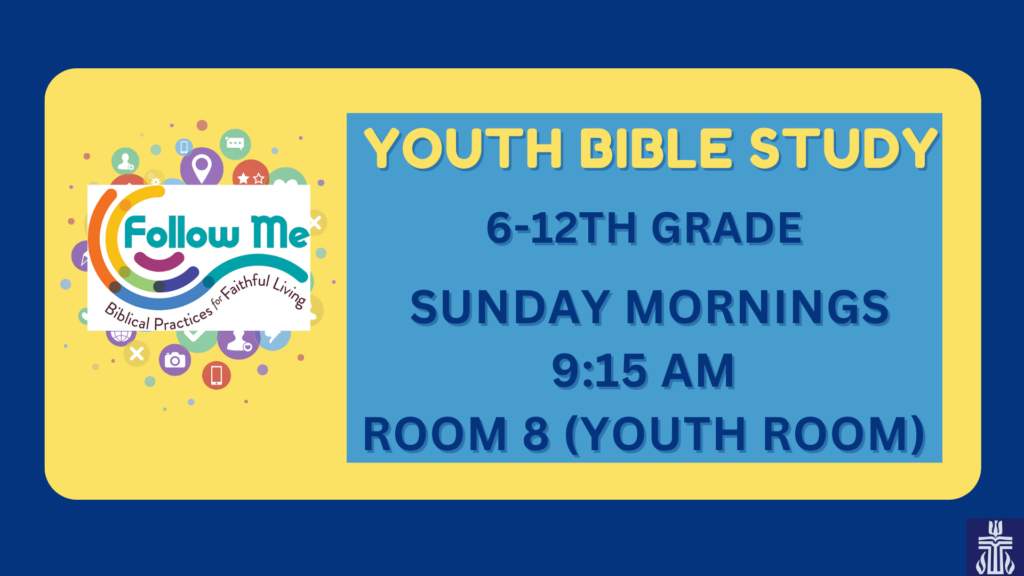Christ is risen! (Christ is risen indeed!) Even though all of the Peeps and chocolate bunnies are now in the 75% off carts, we are still in the liturgical season of Easter, which spans 50 days from the Resurrection to Pentecost. It’s important that we think about Easter as more than just one day of celebration; a whole season of Eastertide prompts us to maintain the energy of those who first ran from the empty tomb. That’s why last week we participated in some “Holy Humor,” to keep the joy and energy of Easter alive. Even two weeks later, we should be brimming with excitement over the news of Christ’s resurrection. In fact, most theologians remind us that every Sunday is truly a celebration of the Resurrection, although practically speaking it can be hard to sustain that level year-round. Once the initial joy of the announcement fades, what happens next? That is what we explore in these 50 days.
For the disciples, the days after Christ’s crucifixion were a mixture of emotions. Many of them had fled the scene at the garden of Gethsemane and foot of the cross. We might imagine they huddled together in the shadows, trying to stay under the radar and out of sight lest they meet a similar fate. John’s gospel reveals them shutting out the rest of the world in a locked upper room, presumably from fear. But we know the gospel message continued to spread. Do you remember the refrain from Andrew Lloyd Webber’s famous rock opera Jesus Christ Superstar? The apostles sing “what’s the buzz? Tell me what’s a happen’” over and over again. Post-resurrection we might imagine it being a bit more hushed, but with even more anxiety as they try to put the pieces of it all together. In Luke’s account of these days, just before this morning’s text, two disciples travel to Emmaus, and a stranger joins them to talk about it all. That stranger, of course, turns out to be the risen Christ, revealed in the breaking of bread. Almost immediately, Cleopas and the other disciple race back to Jerusalem, a 7 mile trip, to proclaim that “The Lord has risen indeed” (verse 34). This is the buzz where our text begins.
And, as if a stranger turning out to be Jesus isn’t exciting enough – in the appearance in today’s lesson, Jesus almost appears out of nowhere. “Surprise! Here I am!” aren’t quite his words, but rather words of peace, a reassurance for their anxiety and fear. Can you imagine? You know how when you’re talking about someone, even something good, and then they walk into the room unexpectedly? You are probably left a little speechless and lose your train of thought. Multiply that and you have a tiny sense of this moment. The disciples probably froze, and turned sheet white, as if they had seen a ghost. Because, despite the news they had been talking about, that is exactly what they perceived as happening; the development of yet another overwhelming ghost story.
Admittedly, I’m not too keen on the idea of ghost stories. I still get chills when I think about the many paranormal activity tv shows that used some semblance of science to examine abandoned haunted places, complete with shadowy images and ominous music in the background. There was even a show on Nickelodeon when I was a kid called Are You Afraid of the Dark? which involved a group of teenagers who formed “The Midnight Society” and each week told a different scary story to the group around a campfire, with nods to the classic Twilight Zone. Yeah, I couldn’t even watch that in the light of the afternoon. That said, I do love a good mystery or plot with twists and turns, and have enjoyed more than one historical ghost tour, as history and rumor intertwine. There are numerous kinds of “ghost stories,” almost to suit every taste, from classics like The Haunting to suspense like The Sixth Sense. Some people live for this kind of uneasiness and apprehension as the lines between fiction and reality are blurred. In fact, that’s what makes the most effective ghost story; when it is so close to being possible that it just might be true.
But there’s a flip side. In many cases, the stories unravel. Like at the end of Scooby Doo when a mask is pulled off and the monster is really a shopowner, or you go to investigate the scratching sound only to realize it’s a tree brushing against the window. Skepticism and closer examination often expose wild imaginations and outright fiction. I think, in part, this is why a story like we have in Luke 24 matters to us. For although the disciples think Jesus is a ghost, their assertion is proven wrong; not once, but twice. First, Jesus invites them to touch him and see that he is flesh and bone. This is not some apparition. They aren’t going to wave their arms through him. He is fully present with them. Here, Jesus affirms the incarnation. God isn’t just with the disciples in a spiritual sense; God dwells among them, and this includes the risen Lord too. In the flesh.
There is a bit of debate among theologians about what to make of the gospel claims of bodily resurrection. Some, like Marcus Borg, argue that the physical presence of Christ isn’t what is at stake with the resurrection, but rather the importance of the experienced reality of the post-Easter Jesus as the inspiration for the claim “Jesus is Lord.” In this perspective, a ghost story would have just as much significance for the disciples, and still leads to the same kind of new existence for those who believe in Christ. If the bones of Jesus were discovered somewhere, it would not shake the foundations of this faith, because it’s not the literal bones that matter. For others, though, this tangible nature of the risen Christ is essential. N.T. Wright notes that it matters because:
Resurrection implies at the very least a coming back to something that had been forfeited, that is, bodily life. . . [and] The deepest meanings of the resurrection have to do with new creation. If the stories are metaphors for anything, they are metaphors for the belief that God’s new world had been brought to birth[i].
He goes on to note that the return of the physical Jesus matters in the context of debate among first century Judaism about the notion of Resurrection, for the first Christians, certainly the disciples, would have framed their understanding of this even in light of their Jewish faith. Wright notes:
There was a spectrum of belief about life after death in first-century Judaism. The Sadducees, the ruling elite, denied a future life of any sort . . . Many Jews believed in a continuing life after death, but in a disembodied state that neither needed nor expected a future reembodiment. . . [while] Resurrection, for Pharisees, was thus part of their belief both in the goodness of the created, physical world and in the ultimate triumph of the justice of God.
As such, the understanding of Jesus’ bodily resurrection would have made a clear separation between this a simply a renewal movement within the Jewish faith, and a distinctly new way of understanding God’s fulfillment of the promises of the prophets. For this, among other reasons, Wright and others stand firmly behind the bodily resurrection as central to an understanding of the meaning of not just the Resurrection, but faith in Jesus Christ. It’s a spectrum of belief, really, and know that wherever you are you are in good Reformed theological company. And, if you’ve never really thought much about it one way or the other, or are content for it to simply be one of those things left to the great mystery of faith, you’re in good company as well. But texts like this open us to think about it a bit more. And while we don’t have to land on a definitive answer, in fact I’d argue that’s impossible, it can be helpful for us to identify where we are and how that may impact the framework of our experience of Easter and of living as one who professes Jesus Christ as our risen Lord.
In all conversations, the importance of the resurrection is affirmed. And, as Stephen Cooper notes:
To insist on the reality of the resurrected body is to demand that we accept our present reality as the place where transformations of ultimate significance take place[ii].
I think that’s what Jesus was trying to prove in his offering of his body to the disciples. That this wasn’t just some figment of their imaginations or hopes in the midst of despair. It was true and real. This matters to us, today, too. Our faith should not be something lost in fantasy or fiction. It should be grounded in the real and tangible experience of Christ among us. Our faith isn’t some theoretical idea. It is something we can touch.
So the disciples touch him and their joy begins to grow. But they still aren’t sure. You can imagine a glistening in their eyes, a turn of the head as they look at him again. Could this really be true? Jesus offers a second offer of proof, asking for something to eat. And he eats some broiled fish. Clearly this is something a ghost could not do. Now the disciples get it. Jesus puts the ghost story to rest, because there are other things he needs the disciples to hear. His offers of proof remove the distractions that otherwise would keep this as simply a fantastic ghost story of inspiration and wonder.
Just as Jesus is present with them, he calls them to embody this good news of resurrection and build upon what they know from scripture and his teachings and become witnesses to all that has been proclaimed, including the resurrection. Barbara Brown Taylor offers that this is how Jesus ushers in their new way of being. She writes:
After he was gone, they would still have God’s Word, but that Word was going to need some new flesh. The disciples were going to need something warm and near that they could bump into on a regular basis, something so real that they would not be able to intellectualize it and so essentially untidy that there was no way they could ever gain control over it. So Jesus gave them things they could get their hands on, things that would require them to get close enough to touch one another[iii].
He calls them to take on these teachings as a way of life together. Just as he has been transformed, resurrected, they too are to be changed in ways that impact their way of being in the world. That is the point of the gospel after all. That is the aim of Easter. To give those who would follow Christ, even the church, new life. One that is marked by tangible engagement with the Word, not just read and studied, but lived and breathed. And when we do that, we fully reflect the image of the risen Christ. As Barbara Brown Taylor notes:
In our embodied life together, the words of our doctrines take on flesh[iv].
For me, this is why it matters that our story in Luke isn’t just another ghost story or idle tale. Because if it is, we let it gloss over us like another fairy tale or fantasy. But doing so misses the impact of the resurrection. It trivializes it and makes it just some other moralistic tale. Instead, the risen Christ comes among us and calls us to reach out, touch and see that this is no ghost. Because if we can allow for a God who puts on flesh himself, even after death, we might just have a faith that we can touch, too. May it be so.
~Rev. Elizabeth Lovell Milford
April 15, 2018
————————————————————————————–
[i] Marcus J. Borg and N.T. Wright, The Meaning of Jesus: Two Visions, (San Francisco, CA: HarperCollins, 1999).
[ii] Stephen A. Cooper, “Theological Perspective: Luke 24:36b-48,” Feasting on the Word: Year B, Volume 2, David L. Bartlett and Barbara Brown Taylor, editors, (Louisville, KY: Westminster John Knox Press, 2008).
[iii] Barbara Brown Taylor, “The Practice of Wearing Skin: Incarnation,” in An Altar in the Word: A Geography of Faith, (San Francisco, CA: HarperOne, 2009).
[iv] Barbara Brown Taylor, “The Practice of Wearing Skin: Incarnation,” in An Altar in the Word: A Geography of Faith, (San Francisco, CA: HarperOne, 2009).



